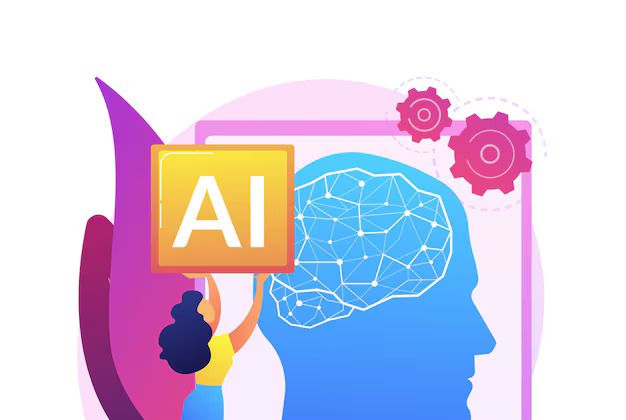The advent of generative AI has marked a paradigm shift in the design industry, empowering creators to produce stunning visuals with unprecedented ease and efficiency. By harnessing the power of artificial intelligence, designers, marketers, and businesses can now generate high-quality images, digital art, and branding materials in a fraction of the time traditionally required. This technology is not just a tool for automation; it is a catalyst for creativity, enabling users to explore new artistic frontiers and redefine the boundaries of visual expression.
Generative AI is particularly transformative for businesses seeking to enhance their visual content strategies. From startups to multinational corporations, companies are leveraging AI-driven design tools to streamline workflows, reduce costs, and deliver personalized, engaging content to their audiences. This blog delves into the mechanics of generative AI in design, its benefits for businesses, and how companies can integrate these tools into their creative processes.
How Generative AI Works in Design
Generative AI operates at the intersection of machine learning, deep neural networks, and creative design. At its core, it analyzes vast datasets of existing images, artwork, and design elements to identify patterns, styles, and structures. Using this knowledge, the AI generates new visuals that mimic human creativity while offering unique variations and possibilities.
Key Technologies Behind Generative AI in Design
- Machine Learning (ML): ML algorithms enable AI systems to learn from data and improve over time. In design, these algorithms analyze visual datasets to understand color palettes, composition, and artistic styles.
- Deep Neural Networks (DNNs): DNNs, particularly Generative Adversarial Networks (GANs), are the backbone of generative AI. GANs consist of two neural networks—a generator and a discriminator—that work in tandem to create realistic and high-quality images.
- Natural Language Processing (NLP): NLP allows AI tools to interpret text prompts and translate them into visual outputs, enabling features like text-to-image generation.
Popular Generative AI Tools for Design
- DALL·E: Developed by OpenAI, DALL·E generates images from textual descriptions, allowing users to create visuals based on specific concepts or ideas.
- MidJourney: This tool focuses on creating artistic and surreal visuals, making it a favorite among digital artists and designers.
- Runway ML: A versatile platform that offers a suite of AI tools for video editing, image generation, and style transfer.
- Stable Diffusion: An open-source AI model that generates high-quality images from text prompts, offering flexibility and customization for designers.
Key Features of Generative AI Tools in Design
- Text-to-Image Generation: Users can describe a scene, object, or concept in words, and the AI generates a corresponding image. This feature is particularly useful for brainstorming and prototyping.
- Style Transfer: AI can apply the artistic style of famous painters or specific design aesthetics to modern images, creating unique and visually striking compositions.
- Automated Design Adjustments: AI tools can enhance images by adjusting colors, lighting, and details, saving designers time on manual edits.
- 3D Model Generation: AI is increasingly being used to create realistic 3D models for industries like gaming, animation, and architecture.
- Content Expansion: AI can generate variations of existing designs, enabling businesses to create multiple versions of a visual for A/B testing or targeted marketing campaigns.
Benefits of Generative AI for Businesses
Generative AI is not just a tool for artists and designers;Benefits of Generative AI for Businesses it is a game-changer for businesses across industries. By integrating AI-driven design tools, companies can unlock new levels of efficiency, creativity, and engagement. Here are some of the key benefits:
1. Cost and Time Efficiency
Traditional design processes often involve significant time and financial investments, especially when outsourcing to professional designers. Generative AI automates repetitive tasks, such as image editing and asset creation, allowing businesses to produce high-quality visuals quickly and at a lower cost. This is particularly advantageous for startups and small businesses with limited budgets.
2. Enhanced Creativity and Innovation
Generative AI opens up a world of creative possibilities by enabling users to experiment with new styles, concepts, and ideas. Designers can push the boundaries of their creativity, exploring combinations and variations that might not have been possible manually. For businesses, this means the ability to create unique and memorable brand identities that stand out in a crowded market.
3. Scalability and Consistency
As businesses grow, maintaining a consistent brand image across multiple platforms and campaigns becomes increasingly challenging. Generative AI ensures scalability by automating the creation of branded visuals, from social media posts to product packaging. This consistency strengthens brand recognition and trust among consumers.
4. Personalization and Customization
In today’s market, personalization is key to engaging customers. Generative AI enables businesses to create tailored visuals that resonate with specific audiences. For example, e-commerce platforms can use AI to generate personalized product recommendations or customized advertisements based on user preferences.
5. Competitive Advantage
Companies that adopt generative AI in their design processes gain a significant competitive edge. By producing visually appealing content faster and more efficiently, businesses can stay ahead of competitors, respond to market trends in real time, and deliver superior customer experiences.
6. Accessibility for Non-Designers
Generative AI democratizes design by making it accessible to individuals without formal design training. Marketers, entrepreneurs, and content creators can use AI tools to produce professional-quality visuals, reducing their reliance on external designers.
How AI Development Companies are Driving Innovation
AI development companies are at the forefront of advancing generative AI technology for design applications. These firms specialize in building and refining AI models, ensuring that they deliver high-quality outputs and user-friendly experiences. By collaborating with AI development company, businesses can access cutting-edge solutions tailored to their specific needs.
Key Contributions of AI Development Companies
- Model Training and Optimization: AI development companies train models on diverse datasets to improve their accuracy and versatility in generating visuals.
- Custom AI Solutions: These firms develop bespoke AI tools that align with a business’s branding and marketing goals, offering greater flexibility and control.
- Integration with Existing Workflows: AI development companies ensure that generative AI tools seamlessly integrate with a business’s existing design and marketing workflows, minimizing disruption.
- Continuous Improvement: By leveraging user feedback and advancements in AI research, these companies continuously refine their models to deliver better results.
Role of Software Development Companies in AI-Driven Design
Software development companies play a critical role in bringing generative AI tools to life. They design and build the platforms and applications that make AI accessible to designers and businesses. These firms also develop custom software solutions that integrate AI into existing design tools, enhancing their functionality and usability.
Key Contributions of Software Development Companies
- User Interface (UI) and User Experience (UX) Design: Software developers create intuitive interfaces that make AI tools easy to use, even for non-technical users.
- Custom Software Development: Businesses can partner with software development companies to build tailored AI solutions that address their unique challenges and requirements.
- Integration with Design Tools: Software developers ensure that AI-powered features are seamlessly integrated into popular design software like Adobe Photoshop, Illustrator, and Canva.
- Scalable Solutions: These companies develop scalable platforms that can handle large volumes of data and users, making them suitable for businesses of all sizes.
Challenges and Ethical Considerations
While generative AI offers immense potential, it also raises important challenges and ethical considerations:
- Intellectual Property (IP) Issues: The use of copyrighted material in training AI models can lead to legal disputes over ownership and originality.
- Bias in AI Models: AI systems can inadvertently perpetuate biases present in their training data, leading to unfair or discriminatory outcomes.
- Over-Reliance on AI: Excessive dependence on AI tools may stifle human creativity and result in homogenized designs.
- Job Displacement: The automation of design tasks could impact employment opportunities for professional designers.
To address these challenges, businesses and developers must prioritize transparency, fairness, and responsible use of AI technology.
Conclusion
Generative AI is revolutionizing the design industry by enabling businesses to create stunning visuals with unparalleled speed, efficiency, and creativity. From text-to-image generation to 3D modeling, AI-driven tools are transforming how we approach design, offering limitless possibilities for innovation. By partnering with AI development companies and software development company, businesses can integrate these cutting-edge solutions into their workflows, gaining a competitive edge in today’s fast-paced market.
As generative AI continues to evolve, its impact on the design industry will only grow, paving the way for more dynamic, personalized, and visually captivating content. However, it is crucial for businesses to navigate the ethical challenges and ensure that AI is used responsibly to complement, rather than replace, human creativity. The future of design is here, and it is powered by generative AI.




Top comments (3)
Generative AI is transforming the design landscape! Using creative tools alongside games like Minion Rush mod APK could inspire some unique visual concepts.
“Generative AI in Design: Creating Stunning Visuals with AI Tools” is a fascinating peek into how creativity is evolving — how machines can be partners, not just tools. blooket blook just popped into my head remixing ideas, playing with form, and surprising results kind of like generative art.
Amazing breakdown of how generative AI is transforming design into a more creative and accessible space. It reminds me of how small details like a Pink Salt Trick Recipe can elevate something ordinary into extraordinary.